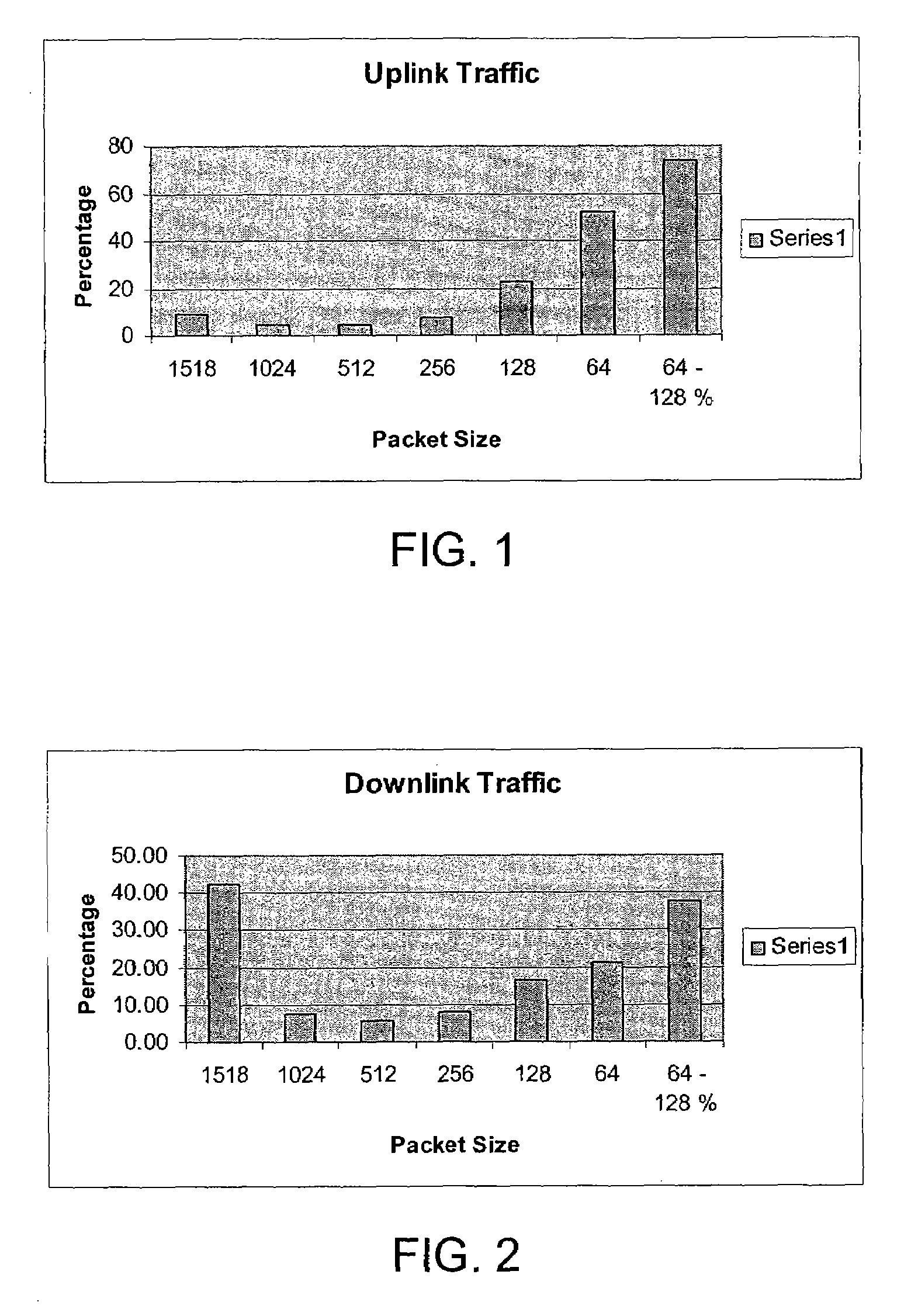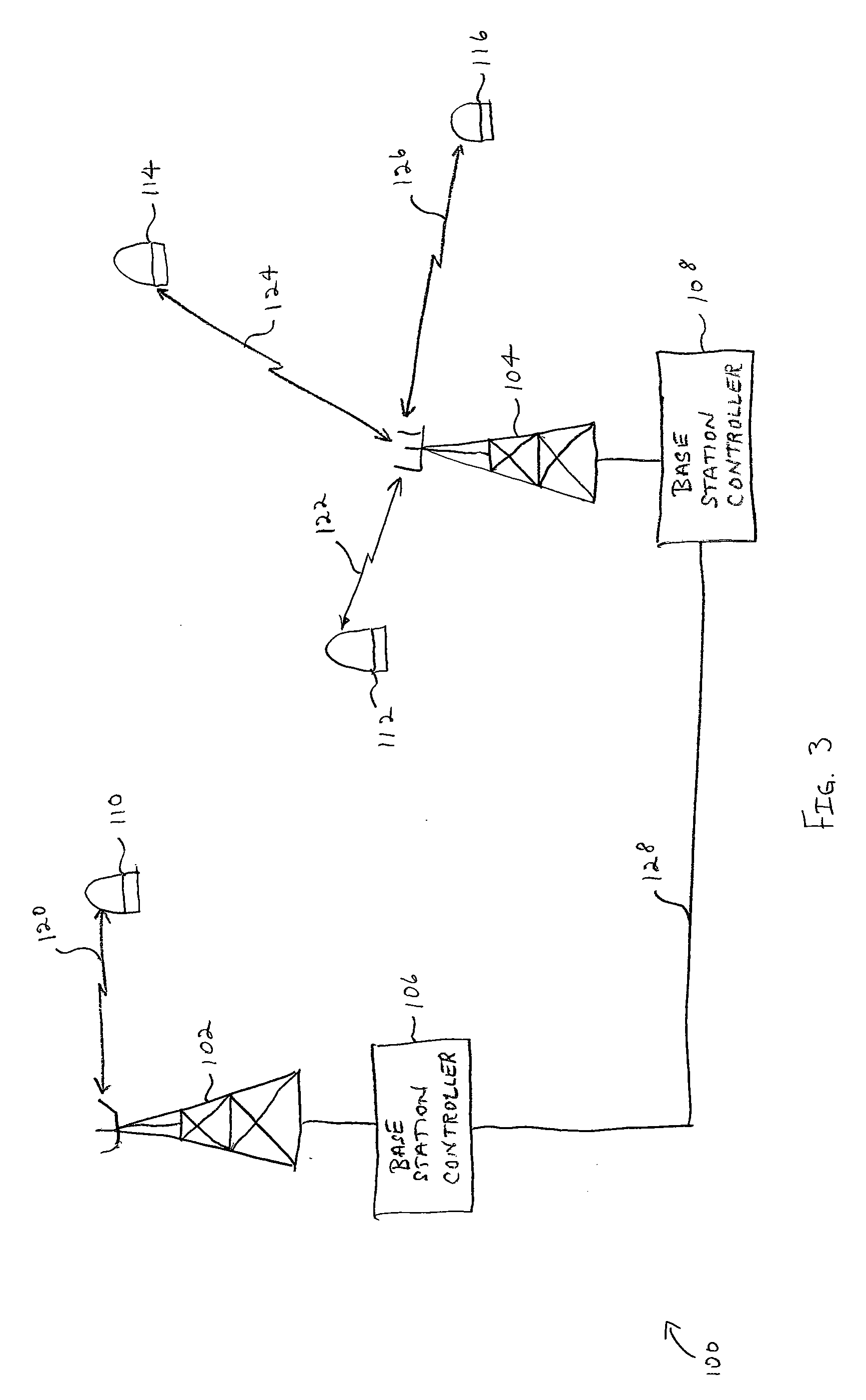System and method for adaptive modulation and power control in a wireless communication system
a wireless communication system and adaptive modulation technology, applied in the field of wireless communication, can solve the problems of increasing the operational capability and complexity of wireless communication systems, increasing interference for another user, and requiring a general increase in bandwidth and signal processing techniques to achieve satisfactory operation of such wireless communication systems
- Summary
- Abstract
- Description
- Claims
- Application Information
AI Technical Summary
Problems solved by technology
Method used
Image
Examples
Embodiment Construction
[0016]The technology disclosed herein introduces concepts that may be applied to an airlink protocol for the purpose of improving overall system performance. As will be described in greater detail below, the processes includes a simple downlink adaptive modulation architecture and algorithms to realize maximum performance that works in conjunction with a form of uplink power control which is used to reduce system noise and inter-cell co-channel interference. The methods described allow a base station (BS) and consumer premise equipment (CPE) to monitor internal and external channel conditions, communicate these events rapidly to each other, and respond to such conditions.
[0017]As will be described in greater detail below, the improved uplink RF link budget allows the system to support a CPE implemented as a PC card rather than requiring an external CPE.
[0018]To better understand the proposed system in proper context, it is desirable to first discuss some underlying system level conc...
PUM
 Login to View More
Login to View More Abstract
Description
Claims
Application Information
 Login to View More
Login to View More - R&D
- Intellectual Property
- Life Sciences
- Materials
- Tech Scout
- Unparalleled Data Quality
- Higher Quality Content
- 60% Fewer Hallucinations
Browse by: Latest US Patents, China's latest patents, Technical Efficacy Thesaurus, Application Domain, Technology Topic, Popular Technical Reports.
© 2025 PatSnap. All rights reserved.Legal|Privacy policy|Modern Slavery Act Transparency Statement|Sitemap|About US| Contact US: help@patsnap.com



